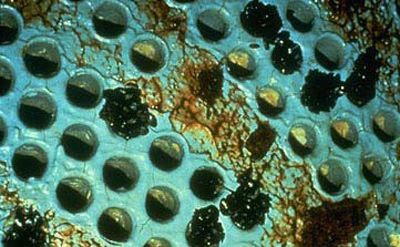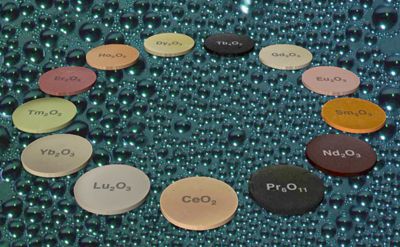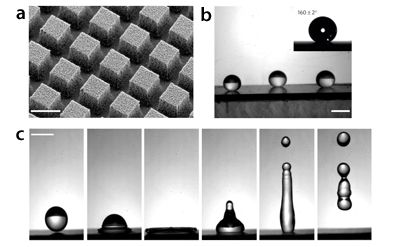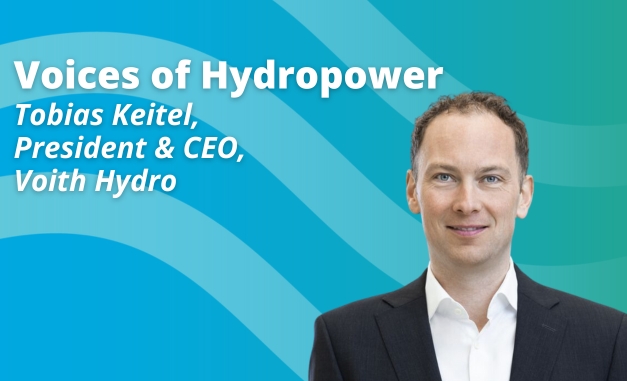The case for versatile hydrophobic rare-earth oxide coatings in hydropower systems
Sami Khan is the winner of the IHA Young Researcher Award 2015. In the article, he discusses his research on how hydrophobic materials can help to improve the efficiency of hydropower systems.
For decades, hydropower has provided a clean, alternative form of energy that still continues to meet the ever-increasing global electricity demand. Presently, hydropower accounts for about 7 per cent of the electricity needs in the US and is a vital component of the clean-energy mix; representing about 52 per cent of the total renewable energy generation.
Hydropower turbines have evolved to become extremely efficient. With over 90 per cent net efficiency, hydropower systems have served as an excellent model for harnessing maximum potential while maintaining a high standard of performance and reliability.
Despite these high performance metrics, hydropower systems have not been immune from environmental factors that affect long-term performance and increase annual maintenance costs. A common example is bio-fouling – in particular, infestation by zebra mussels in many North American hydropower facilities

These species rapidly adhere to hydropower conveyance structures such as penstocks, as well as inside cooling water systems for turbines (see Figure 1, left).
Some plants have adopted chemical treatment procedures to mitigate the infestation; however, such methods have large annual operating costs (estimated around USD 100,000 per year), and may have detrimental environment effects.
Corrosion of plant components, drag-induced losses and scale-formation are other issues that potentially affect the performance of hydropower systems.
Thus, it is highly desirable to have a long-term robust solution in the form of infrastructural upgrades that can address some of these challenges and thereby reduce net annual costs for hydropower facilities.
In this research we make a case for robust hydrophobic rare-earth oxide materials in these upgrades that provide a promising one-stop solution to these issues.
What are hydrophobic materials?
The word hydrophobic, derived from ancient Greek, literally means 'water fearing'. A common example of a hydrophobic material is the lotus leaf: with a slippery, waxy coating on the surface it is capable of keeping itself remarkably dry.
Typically, industrial hydrophobic materials are made from organic derivatives such as waxes or polymers. The problem with organic hydrophobic coatings is longevity: when exposed to harsh environments such as steam or flowing water for example, these materials often degrade and are hence unable to maintain their water-repellency in the long run.
As such, hydrophobic materials that possess robustness to withstand such conditions are extremely desirable.
The particular class of robust hydrophobic materials investigated in this research is called the rare-earth oxide group of ceramics, which are compounds of the lanthanide series elements. Their name is a misnomer; rare-earth oxides are in-fact highly abundant in the earth’s crust and are naturally-occurring.

We demonstrate that all rare-earth oxides from cerium oxide to lutetium oxide have the extraordinary capability of repelling water and staying dry (See Figure 2, left). Unlike typical hydrophobic materials such as waxes, these materials can sustain their hydrophobicity in harsh temperature, pressure and flow conditions.
An added advantage is that rare-earth oxides are relatively cheap compared to other hydrophobic materials; their present market value is about USD 40–60 per kg, and is forecasted to stay unchanged over the next few years.
How are hydrophobic rare-earth oxides beneficial for hydropower systems?
What is also incredible about hydrophobic rare-earth oxides is their ability to repel not just water, but also solids – in other words, these materials possess a low surface energy. A non-stick pan coated with Teflon is a perfect example of this phenomenon: not only is it hydrophobic, but also resists food solids from sticking.
Given their remarkable hydrophobic potential, we envision that low-surface energy hydrophobic rare-earth oxides can greatly reduce or even eliminate bio-fouling in hydropower systems.
Other added advantages are corrosion-resistance and drag reduction: being hydrophobic, these materials minimize friction in flow conditions, thereby reducing drag-induced performance losses.
A common concern with coatings is their longevity and adhesion over time. Being ceramics, hydrophobic rare-earth oxides already have an inherent advantage over typical epoxy or paint coatings due to their superior robustness.

We show that coatings of rare-earth oxides as thin as a few hundred nanometers do not deteriorate in harsh steam environments.
We also demonstrate that these coatings completely repel high-speed impinging water drops (see Figure 3, left). In view of these results, we envisage promising long-term stability of these coatings in hydropower systems.
In conclusion, hydrophobic rare-earth oxide coatings present an attractive multi-dimensional package of enhancements for the hydropower industry. These benefits include bio-fouling resistance, drag reduction, corrosion resistance, and overall, a reliable, long-term form of protection.
Further research would need to evaluate the long-term capital and operating costs in more detail and justify benefits for a typical plant, as well as prove longevity and versatility of applications.
These coatings can be retrofitted in existing systems or applied in new plants, and should be considered by hydropower facilities in the overall scheme of infrastructure modernisation.
Sami Khan is presenting his research at the session on Modernisation: how can existing assets be optimised? at the 2015 World Hydropower Congress.










